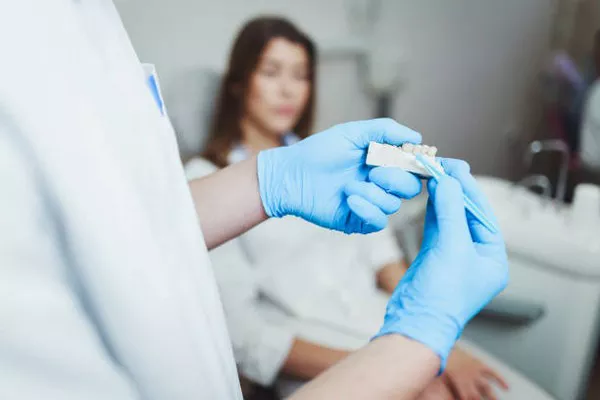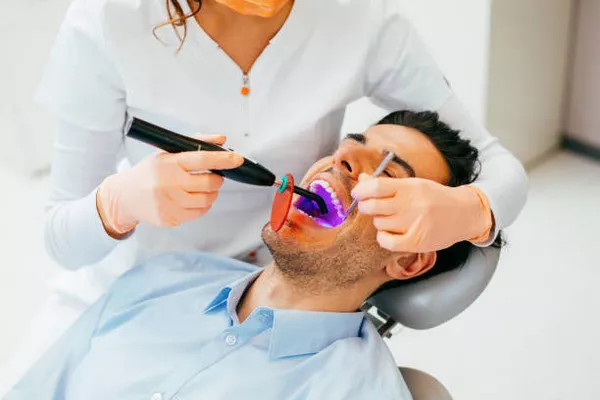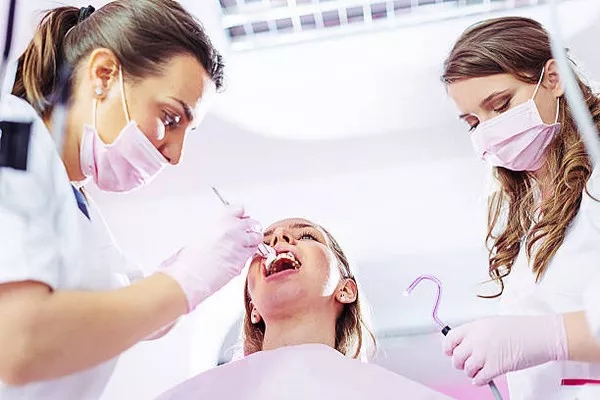Maintaining optimal oral health while wearing braces can be challenging, but it is crucial for preventing gum disease and tooth decay. One question that often arises is whether it is possible to get a deep cleaning with braces. The answer is a resounding yes. Deep cleaning is not only possible but also essential for maintaining oral health during orthodontic treatment. This article explores the necessity, benefits, procedures, and expectations related to deep cleaning for individuals with braces.
Possibility of Deep Cleaning with Braces
It is entirely feasible to undergo a deep cleaning procedure while wearing braces. In fact, regular dental cleanings, including deep cleanings, are critical for individuals with braces. Braces create additional surfaces where food particles and plaque can accumulate, making thorough cleaning more challenging. Deep cleaning helps remove these buildups, ensuring better oral hygiene and reducing the risk of dental problems.
Benefits of Deep Cleaning
Preventing Gum Disease: One of the primary benefits of deep cleaning is the prevention of gum disease. Braces can make it difficult to clean along the gum line, leading to the buildup of plaque and tartar. These deposits can cause inflammation, bleeding, and eventually periodontal disease if not addressed.
Avoiding Tooth Decay: The brackets and wires of braces provide numerous hiding spots for bacteria. Deep cleaning helps remove plaque and tartar from these hard-to-reach areas, reducing the risk of tooth decay and cavities.
Maintaining Fresh Breath: Plaque and food particles trapped around braces can lead to bad breath. Deep cleaning ensures thorough removal of these deposits, contributing to fresher breath.
Enhancing Overall Oral Health: Regular deep cleanings promote overall oral health by preventing the onset of serious dental issues, thereby ensuring a healthier mouth during and after orthodontic treatment.
Procedure Details
Scaling and Root Planing: Deep cleaning typically involves two main procedures: scaling and root planing. Scaling is the process of removing plaque and tartar from the tooth surfaces and beneath the gum line. Root planing smooths the tooth roots, helping gums reattach to the teeth and preventing future plaque buildup.
Performing with Braces: When performed on patients with braces, dental professionals use special tools to navigate around the brackets and wires. Ultrasonic instruments may be used to break up tartar, while manual scalers can remove deposits from the tooth surfaces. The procedure may take longer than a standard cleaning due to the additional surfaces that need to be addressed.
see also: When Can I Eat After Deep Cleaning
Frequency of Cleanings
Dental professionals generally recommend that individuals with braces undergo deep cleaning more frequently than those without braces. While a typical recommendation is every six months, those with braces might need cleanings every three to four months. The exact frequency depends on individual oral health needs, the level of plaque buildup, and the presence of any gum disease.
Oral Hygiene Tips
Use Interdental Brushes: Interdental brushes are small, specially designed brushes that can reach between the teeth and braces. They are effective at removing food particles and plaque from areas that a regular toothbrush cannot reach.
Floss Threaders: Flossing with braces can be tricky, but floss threaders make it easier. These devices help thread dental floss behind wires and between teeth, allowing for thorough cleaning.
Electric Toothbrushes: An electric toothbrush with a small, rotating head can be more effective at cleaning around braces than a manual toothbrush. Look for one with soft bristles to avoid damaging the gums and braces.
Regular Rinsing: Using an antiseptic mouthwash or a fluoride rinse can help reduce plaque and bacteria in the mouth. Rinsing after meals can also help remove food particles trapped in the braces.
Avoid Sticky and Sugary Foods: Foods that are sticky or high in sugar can easily get stuck in braces and contribute to plaque buildup and tooth decay. Avoiding these foods can help maintain better oral hygiene.
What to Expect
During the Procedure: During a deep cleaning, you can expect the dental hygienist to spend a significant amount of time meticulously cleaning around each bracket and wire. The use of specialized tools helps ensure thorough removal of plaque and tartar. The procedure might be a bit uncomfortable, especially if there is significant buildup, but it is generally not painful.
After the Procedure: Post-cleaning, your teeth may feel sensitive, especially if there was a lot of tartar removed. Your dentist might recommend using a toothpaste for sensitive teeth to alleviate discomfort. It is also normal to experience slight gum soreness or bleeding, which should subside within a few days.
Care Instructions: Following a deep cleaning, maintaining excellent oral hygiene is crucial. Brush and floss regularly, and follow any specific care instructions provided by your dentist. Avoiding hard, crunchy foods that can damage braces is also recommended.
Cost and Insurance Coverage
Potential Costs: The cost of deep cleaning can vary depending on the severity of plaque buildup, the complexity of the procedure, and the dental practice. On average, deep cleaning can cost between $150 to $300 per quadrant (a quarter of the mouth). For a full mouth deep cleaning, the cost can range from $600 to $1200.
Insurance Coverage: Many dental insurance plans cover part or all of the cost of deep cleaning, especially if it is deemed medically necessary due to gum disease. It is advisable to check with your insurance provider to understand the coverage details and any out-of-pocket expenses you might incur.
see also: How Much Is Teeth Cleaning And Whitening
Finding a Dentist
Experience Matters: When seeking a dentist or orthodontist for deep cleaning with braces, look for professionals experienced in treating patients with orthodontic appliances. An experienced practitioner will be familiar with the challenges posed by braces and will use appropriate techniques to ensure thorough cleaning.
Referrals and Reviews: Ask your orthodontist for referrals to dental professionals who specialize in deep cleaning for patients with braces. Additionally, read online reviews and testimonials to gauge the experiences of other patients.
Consultations: Schedule consultations with potential dentists to discuss your needs and expectations. During these consultations, inquire about their experience with deep cleaning procedures for braces and ask any questions you might have about the process.
Conclusion
Maintaining oral health with braces requires diligence and the right care strategies. Deep cleaning is an essential component of this care, offering numerous benefits, including the prevention of gum disease and tooth decay. By understanding the procedure details, adhering to recommended frequencies, and employing effective oral hygiene tips, individuals with braces can achieve and maintain a healthy smile. Finding a qualified dental professional and understanding the cost and insurance coverage can further ensure that you receive the best possible care during your orthodontic treatment.
FAQs About Braces and Dental Cleaning
1. Can you get braces after deep cleaning?
Yes, you can get braces after a deep cleaning. In fact, it is often recommended to have a thorough cleaning before getting braces to ensure that your teeth and gums are in the best possible condition. Deep cleaning helps remove plaque, tartar, and bacteria from below the gum line, reducing the risk of gum disease and tooth decay, which is crucial before starting orthodontic treatment.
2. How do you clean dirty teeth with braces?
Cleaning teeth with braces requires extra care and attention. Here are some tips to maintain good oral hygiene:
Use an Orthodontic Toothbrush: A toothbrush with a small head and soft bristles designed for braces can help clean around brackets and wires more effectively.
Flossing: Use floss threaders or special orthodontic floss to clean between teeth and under the wires. Interdental brushes can also be helpful for reaching between brackets.
Mouthwash: An antibacterial mouthwash can help reduce plaque buildup and prevent gum disease.
Water Flosser: A water flosser can be a useful tool to dislodge food particles and plaque from around braces and between teeth.
Regular Brushing: Brush your teeth after every meal and snack to prevent food particles from getting trapped in your braces.
3. Can a dentist remove tartar with braces?
Yes, a dentist or dental hygienist can remove tartar even if you have braces. Regular professional cleanings are essential when you have braces to prevent plaque buildup and tartar formation, which can lead to gum disease and tooth decay. The dental professional will use special tools to clean around the brackets and wires without damaging them.
4. Do braces need to be removed for cleaning?
No, braces do not need to be removed for regular cleanings. Dentists and dental hygienists are trained to clean around braces and ensure that your teeth and gums remain healthy throughout your orthodontic treatment. However, in some cases where deep cleaning is required due to severe gum disease, your orthodontist and dentist might work together to decide the best course of action, which could involve temporarily removing the braces. This is rare and typically not necessary for routine cleanings.
You Might Be Interested In






























